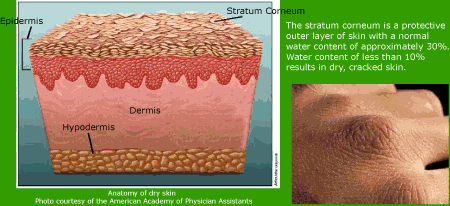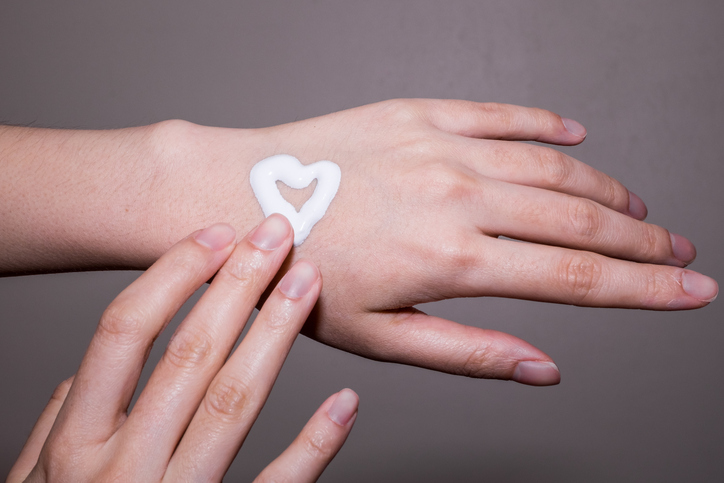Dry skin is a common problem for many people and is especially common in cold or dry climates. The main cause of dry skin is a lack of moisture on the surface of the skin and a relative lack of natural oils. Dry skin occurs because there is a lack of fatty tissues in the hypodermis, due to inherited characteristics such as ageing, disease, exposure to sun and the wind or poor nutrition. Dry skin can be made worse due to excessive washing and bathing, using hot water, use of traditional alkali soaps, cold weather, low humidity, artificial heating, dry air, overexposure to wind or cold, and poor diet.
The epidermis is normally composed of fat (lipid) and protein. The lipid portion of the epidermis helps prevent skin dehydration. When the skin’s fatty oils are removed, the skin loses its protection and loses moisture more easily. As skin becomes dry, it also may become more sensitive and prone to rashes and skin breakdown. This condition is sometimes referred to as xerosis. Dry skin may be an entirely invisible skin condition or may cause a fine dry powder-like appearance of the skin. The untreated dry skin may become irritated and result in a red rash (xerodermatitis).

Customers with dry skin may experience some or all of the following symptoms:
- The skin may become thin and taut and react easily to weather and temperature changes.
- Lines and wrinkles appear
- Very sensitive flaky patches
- Skin is rough and scaly
- Dry to touch, less elastic than normal skin
- Dull with no natural lustre.
The untreated dry skin may result in complications, including eczema, secondary bacterial infections, cellulitis and skin discoloration.
As dry skin does not produce sufficient oils and moisture to keep it looking supple and firm, extra care must be taken to moisturise it daily and nourish it nightly. Customers with dry skin find relief by using moisturisers and nourishing creams. They should also protect themselves against the harsh, drying effects of sun, wind, snow and air conditioning.
There are some other helpful hints and tips we can suggest to our customers if they are suffering from dry skin.
- Decrease the shower temperature to lukewarm, and keep showers short. Five minutes is enough to get clean without over-drying.
- Don’t put just any bar of soap into your shower dish — they’re not all the same. Wash with a harsh soap, and you’ll send your skin’s natural moisture barrier straight down the drain.
- Use a mild, fragrance-free soap that moisturises as it cleanses.
- Eat well to keep your skin in top condition. You can do this by eating a diet that is naturally rich Omega 3. These can be Walnuts, safflower oil, tuna, salmon or mackerel.
Suggesting these tips to your customers will assist them with being nice to their skin!
References
Medicine Net (2016) ‘Dry Skin’ http://www.medicinenet.com/dry_skin/page5.htm
SIRCPPK206 Assist customers seeking relief to skin and fungal conditions

